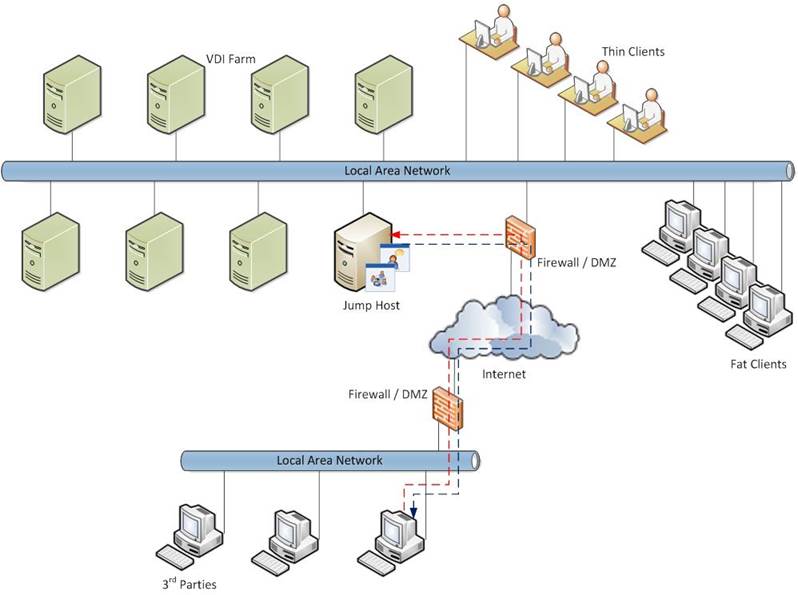
You are here |
|
Desktop Virtulisation Virtualization owes its roots to the mainframe environments of the mid-60s, enabling machines to be partitioned into logical partitions (LPAR). This enabled virtual machines to be created on the mainframe hardware allowing different operating systems and/or application versions to execute concurrently within the same hardware platform. The mainframe environments became more sophisticated over time and management tools were created to manage the LPARS. As hardware became cheaper and more powerful and with the advent of Unix and latterly Linux a number of products have been developed to enable virtualization in low cost server environments as well as desktops environments. However, one of the most exciting areas of virtualization is the virtual desktop infrastructure (VDI). The VDI environment is usually centrally hosted on server grade hardware, although where the environment is not critical to the business some organisations are recycling old hardware to host VDI environments. Each VDI platform is configured with a host operating system and guest operating "image". The image consists of the guest operating system plus any applications that need to be made available to the user. It is possible to configure the image as a pooled image or as a dedicated image. Each time a user logs on to a pooled image it take the configuration that was saved during its creation. This is useful as any changes a user makes are discarded when they log off ensuring a "clean" image is presented each time a user logs on to the VDI. A dedicated image allows the user to save changes so each time they log on they have their personalised VDI. Multiple images can be hosted on a server and multiple servers can be created to form VDI farms. Access to the VDI from a desktop device is via a browser plug-in. The simple access method and centralised management of the VDIs creates an environment where desktop machines no longer need to be powerful which can save a lot of money across an organisation. It is also a great enabler for organisations that want to adopt a bring your own device policy. Where application maintenance has been outsourced, VDIs can also be used as an alternative to giving PCs to the outsource organisation saving money and making the management of the environment far simpler.
Whilst it is easy to see where VDIs can reduce cost, they can also be beneficial to hosting legacy applications – for example hosting Windows XP images where applications wont execute under Windows 7/8 making desktop migrations much easier. They can also be used to host mixed environments, for example where an organisation has a large Windows footprint, VDIs can be used to host Linux applications enabling organisations to no longer be constrained by their choice of desktop operating system.
An Example VDI Configuration
One of our clients took advantage of the flexibility of VDIs to provide a platform for legacy applications that were not able to execute in their new platform environment. They also enabled developers to have access to VDIs that had been configured to the same specification as the new target platform. This enabled developers to prove their applications worked prior to migrating them to the new platform. 3rd party application maintenance teams were also given access to VDIs via jump hosts, a cost effective alternative to providing them with dedicated hardware. They also plan to give remote offices access to the VDI farm to improve network latency when accessing remotely hosted applications. Back to the top |
|
|

